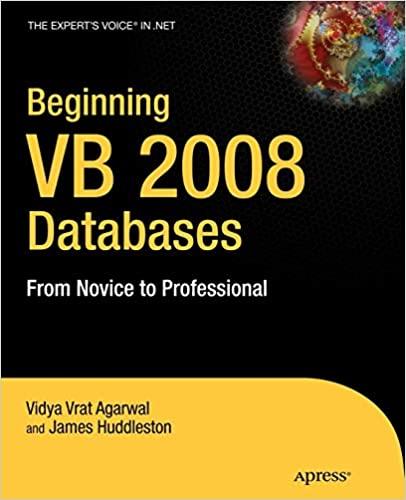Question
For this exercise, you will be simulating a weather station responsible for recording hourly temperatures and reporting on certain characteristics (e.g., average temperature) from your
For this exercise, you will be simulating a weather station responsible for recording hourly
temperatures and reporting on certain characteristics (e.g., average temperature) from your recordings.
You will also be expanding on your experience in creating functions and passing them more complex
parameters (i.e., complete array arguments).
Specifications:
DDI&T a C++ program to input, store, and process hourly temperatures for each hour of the day
(i.e., 24 temperatures). Your program should be divided logically into the following parts:
1. In function main() declare an array:
array
(where NUM_TEMPERATURES should be declared as a constant with the value, 24), that
will be used to hold one temperature for each hour of the day. Declare other variables and
constants as you feel are necessary.
2. Pass the HourlyTemperatures array to a function,
void GetTemperatures(array
This function must interactively prompt for and input temperatures for each of the 24 hours
in a day (0 through 23). For each temperature that is input, verify that its value lies in the
range of minus 50 degrees and plus 130 degrees (i.e., validate your input values). If any
value is outside the acceptable range, ask the user to re-enter the value until it is within this
range before going on to the next temperature (HINT: use a nested loop (e.g., do-while) that
exits only when a value in the specified range has been entered). Store each validated
temperature in its corresponding element of the 24-element integer array passed as a
parameter to the function.
3. Next pass the filled array to a function,
double ComputeAverageTemp(array
This function computes the average temperature of all the temperatures in the array and
returns this average to the calling function.
4. Finally, pass your array and the computed average temperature to another function,
void DisplayTemperatures(array
double AverageTemp);
which displays the values of your temperature array in a columnar format followed by the
values for the high temperature, low temperature, and average temperature for the day.
NOTE: If you want to create separate function(s) to find and return the high and low
temperature values, then feel free to do so!
The resulting output should look like this:
Hour Temperature
00:00 42
01:00 42
. . . . . . . . // Your program output must include all of these too!
22:00 46
23:00 48
High Temperature: 68
Low Temperature: 42
Average Temperature: 57.4
5. Since you have created functions to perform each of the functional steps of your solution,
your main() function should be quite simple. The pseudo code for main() might look
something like this:
int main()
{
// declare local constant(s), variable(s), and array(s).
do
{
// call GetTemperatures(HourlyTemperatures);
// call ComputeAverageTemp(HourlyTemperatures);
// call DisplayTemperatures(HourlyTemperatures, AverageTemperature);
} while // user wants to process more days of temperatures
return 0;
}
6. Test your program with at least two (2) different sets of temperatures. Make sure you
enter values to adequately test your temperature-validation code (e.g., temperatures below
50 and above +130 degrees).
Deliverable(s):
Turn in the properly documented source listing of your program and complete outputs from
at least TWO (2) test runs. Additionally, turn in screen captures of some of your interactive inputs
demonstrating that your program properly detects invalid inputs and prompts the user to re-enter the
temperature(s). Starting with this exercise you must document your solution in accordance with the
examples shown at the back of this syllabus and provided on the Portal.
Step by Step Solution
There are 3 Steps involved in it
Step: 1

Get Instant Access to Expert-Tailored Solutions
See step-by-step solutions with expert insights and AI powered tools for academic success
Step: 2

Step: 3

Ace Your Homework with AI
Get the answers you need in no time with our AI-driven, step-by-step assistance
Get Started


